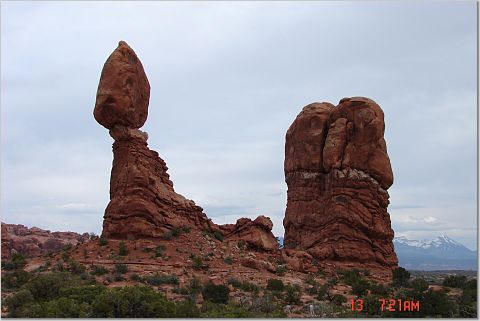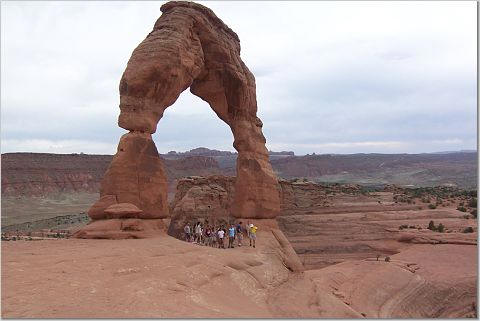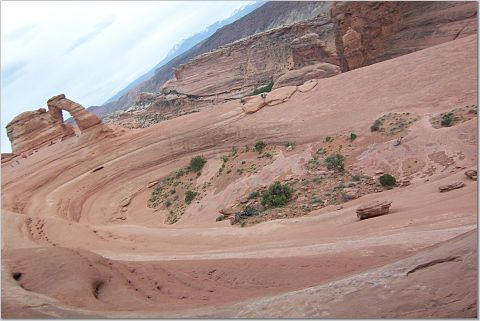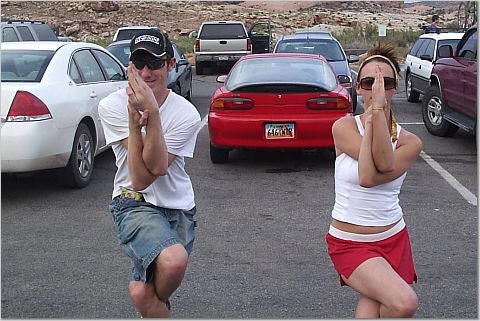Seventh Day
May 13. 2006
Some of us got up really early, at 4:30 to see the sunrise at Arches National Park. It was absolutely magnificent.
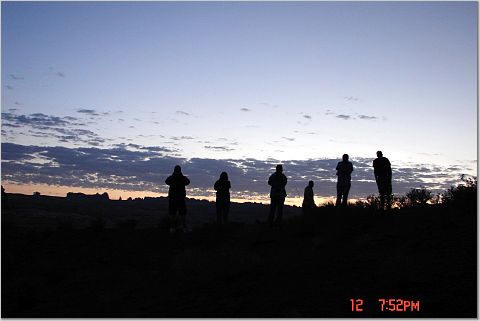


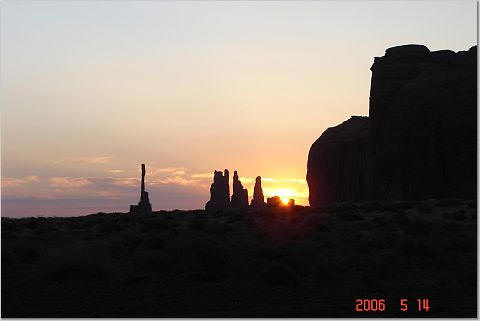

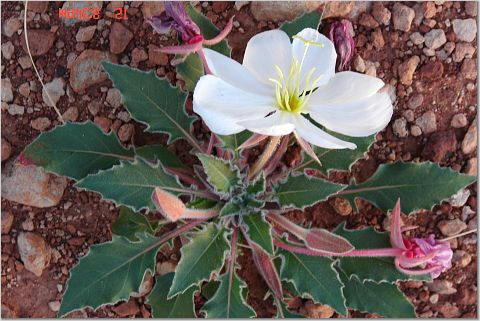
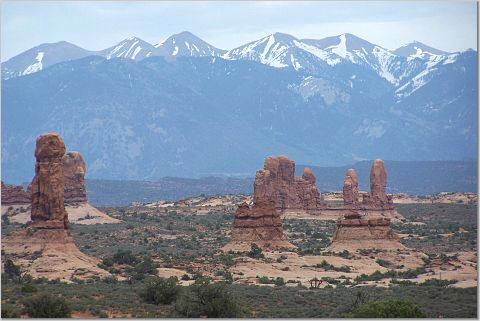
After our sunrise tour, we had a great breakfast in a Pancake house. We met up with the rest of the group and headed to the Dead Horse Point State Park.
"The geology of Arches National Park, Dead Horse State Park and the Canyonlands National Park is very similar. They occur in the Canyonlands section of the Colorado Plateau, in the vicinity of the confluence between the Green and Colorado rivers.The same stratigraphic units outcrop in all three parks plus salt tectonic features can be found in both Arches and Canyonlands. It is especially important at these parks to preserve the fragile cryptogamic soils. Cryptogamic soils are a complex of lichens, algae, moss and fungus that occurs as a black coating on the ground surface and as small mounds where it is well developed. It plays an extremely important role in the desert ecology. It binds the soil together and inhibits wind erosion and erosion by sheet wash. The rocks in these parks range in age from Pennsylvanian through Jurassic. The so called Ancestral Rocky Mountains were formed by uplifting as the formation of the Super continent Pangea was taking place. At the same time the Paradox Basin formed by subsidence. The oldest rocks in this area are the Pennsylvanian Paradox Formation, a thick accumulation of salt deposits that formed by evaporation of sea water in the restricted Paradox Basin. Although there are very few outcrops of the Paradox Formation, later movement of the salt deposits play an important role in the geology of these parks. Overlying the Paradox Formation is the Honaker Trail Formation which begins to outcrop along the Colorado and Green Rivers in the region just north of the Confluence. The Honaker Trail Formation consist of fossiliferous limestones with minor shales and sandstones.
"Utah’s Grand Canyon, the Dead Horse Point State Park is conceivably Utah's most astonishing state park. soaring 2,000 feet directly above the Colorado River, the mesa that is Dead Horse Point provides breathtaking views of the canyon country of southeastern Utah and the pinnacles and buttes of Canyonlands National Park.

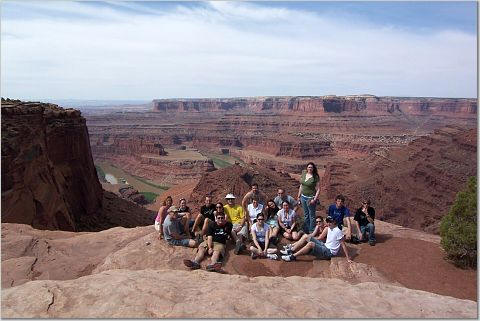
"The story behind how Dead Horse Point got its name is a
very interesting one. Legend has it that around the turn of the century
the point was used as a corral for wild mustangs, the cowboys used the
point to trap them on. As time went on, the cowboys kept the horses
they did not want at the point. Unfortunately, the horses did not have
any water and died. Thus, the area became known as Dead Horse Point.
The most noticeable features on Dead Horse Point are the evaporite
ponds. These ponds are the property of the Gulf Corporation and are
being excavated for the salt in them, not the type you use on your food
though. The white you see in the ponds is the salt. If you were
wondering, the bright blue is caused by the algae that inhabits it. The
rocks of Dead Horse Point range in age from Pennsylvanian up through
Jurassic. The formations in here are:
By:Rick Mazey
http://www.iup.edu/fieldtrip/deadhorse.html
our next visit took us to the Northern part of Canyonlands National Park, which is also called Island in the sky. It was sunny and extremely hot. After Yellowstone and Colorado's snowy mountains the 100 degree was unbearable.
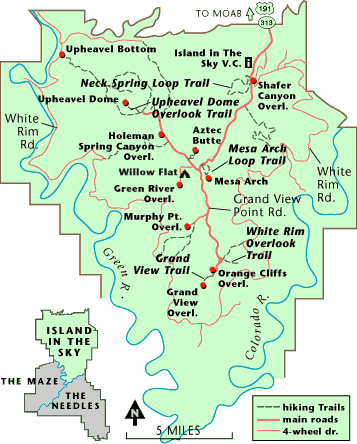 .
.
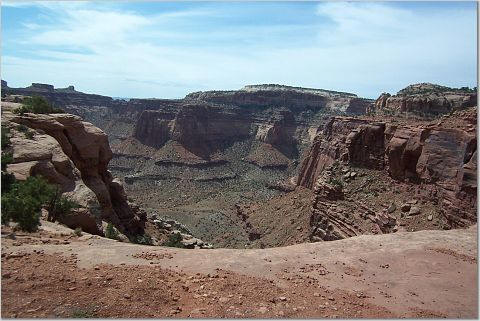
First we
stopped at the Shafer Canyon outlook and drive in halfway. It was pretty
incredible. After that we headed to the Grand view overlook.
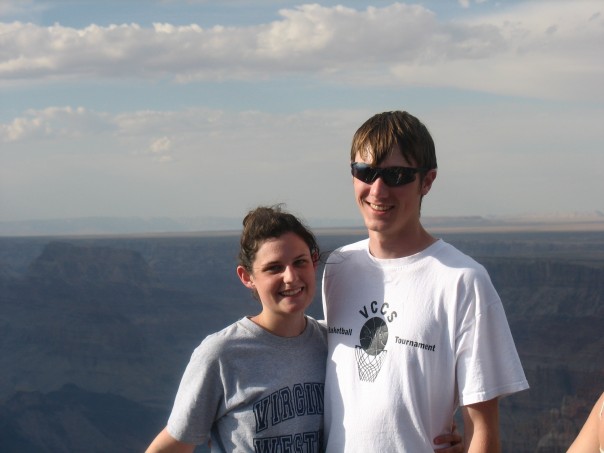
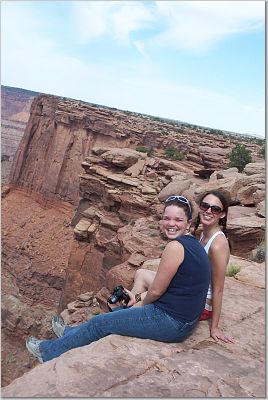
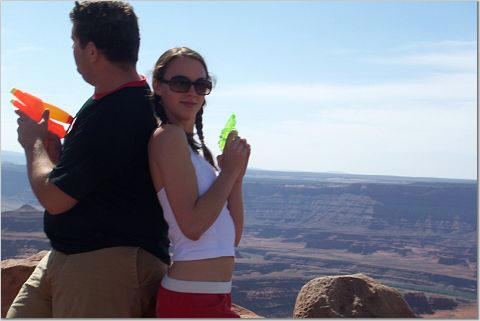
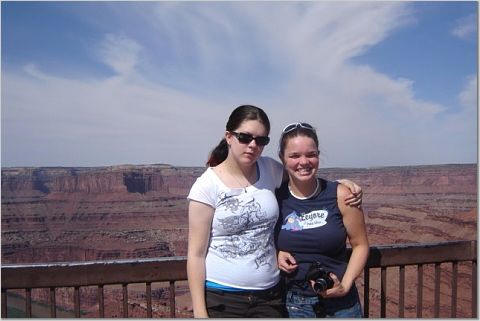
We had to use any kind off cooling
 Any kind of cooling
Any kind of cooling
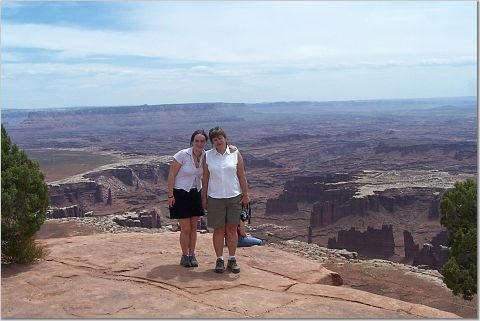
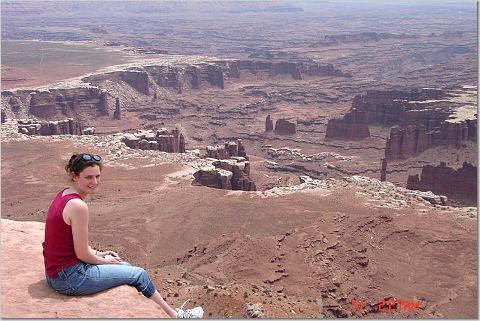
At the Grand view overlook
We were tired, hungry and hot, so turned back to the hotel. The group spent three hours in the pool during the heat of the day. At four we headed to the Arches National Park. We were ready to hike to the Delicate arch. The only sad thing was the weather. The sky was cloudy, we could not hope for pretty sunset pictures.
